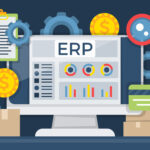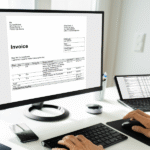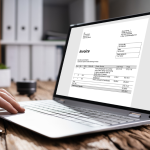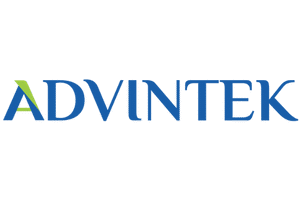As Malaysia continues its digital transformation, businesses must comply with the Inland Revenue Board of Malaysia (LHDN) e-invoicing guidelines to ensure smooth operations and avoid penalties. The introduction of e-invoicing mandates a structured timeline for different transaction types, making it essential for businesses to understand the nuances of e-invoice issuance.
This detailed guide provides an in-depth look into six key e-invoice transaction types in Malaysia, their issuance timelines, and practical examples to help businesses stay compliant.
1. e-Invoicing Timeline for Standard e-Invoice
Usage:
Standard e-invoices are applicable for regular business transactions, including product sales and service provisions. These invoices serve as primary records for both buyers and sellers in maintaining compliance with tax and financial reporting obligations.
Issuance Timing:
Unlike other transaction types, LHDN does not impose a strict issuance deadline for standard e-invoices, allowing businesses to follow their usual invoicing cycles. However, maintaining timely records is crucial to avoid disputes and ensure smooth tax filings.
Example:
- A retail store sells goods throughout the month and issues invoices at the end of each week.
- A consulting firm provides services on an ongoing basis and issues invoices monthly to clients based on completed work.
2. e-Invoicing Timeline for Consolidated e-Invoice
Usage:
Consolidated e-invoices are designed for businesses that handle multiple transactions within a billing period and prefer to issue a single invoice instead of multiple separate invoices. This is especially beneficial for retailers, wholesalers, and service providers dealing with frequent transactions.
Issuance Timing:
LHDN mandates that consolidated e-invoices be issued within seven days after the end of each month. This timeline allows businesses to group all relevant transactions into a single document while ensuring compliance.
Example:
- A supplier delivers goods to a client multiple times throughout October.
- Instead of issuing separate invoices for each transaction, the supplier consolidates all deliveries into one invoice, which must be issued by November 7.
3. e-Invoicing Timeline for Self-Billed e-Invoice for Products
Usage:
Self-billed e-invoices are common in scenarios where buyers generate invoices on behalf of suppliers, such as in drop shipping or import transactions. This process ensures smoother financial reconciliation and reduces administrative burdens for suppliers.
Issuance Timing:
- Imported Products: After customs clearance, the self-billed invoice must be issued before the end of the following month.
- Drop Shipment Models: If customs clearance is not required, the invoice should be generated as soon as the supplier’s invoice is received.
Example:
- A company imports raw materials from an overseas supplier. Customs clearance occurs on September 15, so the self-billed e-invoice must be issued before October 31.
- A drop shipping business receives an invoice from the supplier on October 5. Since no customs clearance is required, the self-billed e-invoice is generated immediately upon receiving the invoice.
4. e-Invoicing Timeline for Self-Billed e-Invoice for Services
Usage:
Businesses use self-billed invoices for services received, especially when dealing with foreign suppliers or contract-based services. These invoices ensure accurate financial reporting and tax compliance.
Issuance Timing:
- Upon Payment to Supplier: The e-invoice must be issued before the end of the following month.
- Upon Receiving a Foreign Supplier’s Invoice: The issuance deadline is also the end of the following month unless specified otherwise by the transaction agreement.
Example:
- A Malaysian company hires an IT consultant from Singapore. Payment is made on September 15, so the e-invoice must be issued by September 30.
- A construction firm receives an invoice from a foreign contractor on October 10. The self-billed e-invoice must be generated by November 30 to comply with LHDN’s regulations.
5. e-Invoicing Timeline for Consolidated Self-Billed e-Invoice
Usage:
This type of invoice aggregates multiple self-billed transactions, providing a comprehensive summary of all self-billed invoices issued over a specific period.
Issuance Timing:
A consolidated self-billed e-invoice must be issued within seven days after the end of each month.
Example:
- A manufacturing company generates multiple self-billed invoices for subcontracted services throughout September.
- By October 7, a consolidated self-billed e-invoice is issued to summarize all relevant transactions.
6. e-Invoicing Timeline for Foreign Income
Usage:
Businesses and individuals receiving income from foreign entities—such as royalties, interest, or dividends—must issue e-invoices for these transactions.
Issuance Timing:
E-invoices for foreign income must be issued before the end of the month following the income receipt date.
Example:
- A Malaysian company receives royalty payments from an overseas client on August 25.
- The corresponding e-invoice must be generated by September 30 to ensure compliance.
Practical Examples of e-Invoicing Timeline Scenarios
To further clarify these regulations, here are real-world examples of how businesses apply e-invoicing timelines:
1. Product Supply Chain:
- August 12: A supplier delivers 100 units to a buyer.
- August 15: The buyer returns 5 defective units.
- August 17: A consolidated e-invoice is generated for the remaining 95 units.
2. Vehicle Repair Services:
- August 12: A car is sent to a repair shop.
- August 15: Repairs are completed, and an e-invoice is issued.
- August 17: The customer collects the vehicle and makes payment based on the issued e-invoice.
3. Monthly Consolidated Billing:
- October 31: All transactions for the month are recorded.
- November 7: A consolidated e-invoice is issued within the required 7-day window.
Conclusion: Stay Compliant with Advintek’s e-Invoicing Solutions
Navigating Malaysia’s e-invoicing timelines can be complex, but with the right approach, businesses can ensure compliance without disrupting operations. Advintek provides robust e-invoicing solutions tailored to Malaysian regulatory requirements, helping businesses streamline invoicing, reduce administrative overhead, and enhance financial transparency.
With Advintek, businesses gain access to:
- Automated e-invoice generation and submission.
- Seamless integration with existing financial systems.
- Compliance assurance with LHDN regulations.
Stay ahead of compliance challenges with Advintek —your trusted partner in digital invoicing solutions. Visit Advintek to learn more.









